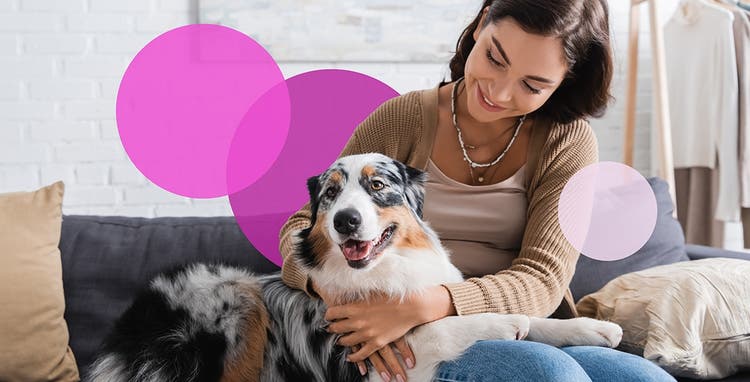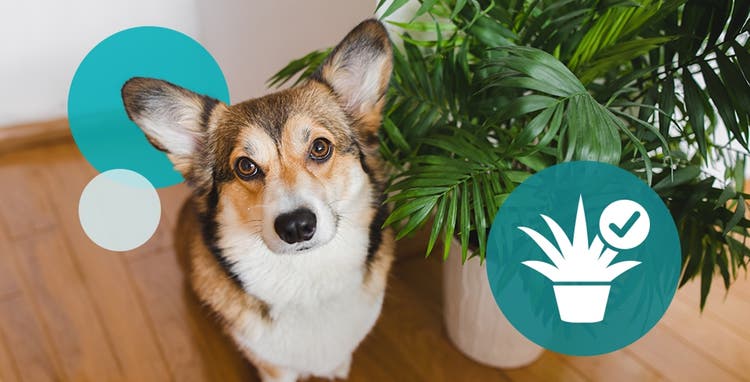Advice and tips for new dog owners.
Welcoming a new dog into your life is always a big deal. Especially if this is your first pet, bringing home a new dog, introducing them to your family and home, and making sure they are healthy can be an overwhelming experience.
As you and your new pup settle in together, you’ll form a bond through everyday moments, from neighborhood walks to behind-the-ear rubs to sharing the sofa. And you can take several steps to help your pet adjust to their new setting — even before they arrive. With a little patience and preparation, your new dog will soon feel right at home.
Tips for First-time Dog Owners
Tip 1: Purchase Supplies
Head to your local pet store or online retailer to gather the supplies your new dog will need. Be sure to purchase:
- A collar and leash; consider ordering an identification tag as well
- Food and water bowls
- A dog bed and crate
- Dog poop disposal bags
- Dog food — check with your shelter or breeder to find out what food your pup has been eating and if they will provide a starter portion. Always transition to new food gradually to avoid causing an upset stomach.
- Treats
- Toys like tennis balls or chew toys
When it comes to toys and treats, it’s a good idea to start out with just a few options while you get to know your dog’s personality, digestive system and preferences. As you learn what your dog likes, you can add more to their collection.
Tip 2: Prepare Your Home for a New Dog
Before you bring your pup home, make sure your house — and the people and pets already living there — is ready:
- Set up a designated dog zone with your new pet’s crate, bed and toys where they can feel safe as they adjust.
- Establish house rules. Are pets allowed on the couch or bed? Are any rooms off-limits? Who’s in charge of walking and feeding the dog?
- Puppy-proof your house if you are bringing home a young dog. Keep electrical cords out of reach, put trash or recycling in lidded containers or behind closed doors, and hide shoes, socks and anything else a puppy might chew in closets or drawers.
- Make sure any current pets’ shots are up to date. It’s a good idea to have all pets on an effective flea preventive year-round, as well.
Tip 3: Give Your Dog Lots of Time to Acclimate
It’s finally time to introduce your new dog to their forever home! Remember that this exciting time can be a little scary for your dog; here’s how you can help with their transition:
- Plan to take the dog home at the beginning of the weekend or on a day when you can dedicate the entire day (or, ideally, a few days) to helping them get settled.
- Let your dog explore the house and yard. Be sure to show them the place they’ll go to the bathroom and give them some time to go, followed by lots of praise and positive reinforcement.
- Give your dog some space. Your new pet may, understandably, feel overwhelmed. Try to balance giving them love and attention with some time alone so they can get used to their new home at their own pace.
Tip 4: Start Training Your Dog
Depending on your new pet’s age and background, they will require varying amounts of house training, obedience training and socialization. Remember: It’s never too early to start training! Throughout the training process, consistency, patience and positive reinforcement are key.
- Make sure your dog knows who’s boss. If you catch them doing something they shouldn’t, immediately let them know they’ve misbehaved in a calm, firm and disapproving voice.
- Reward good behavior with lots of praise and treats.
- Consider signing up for a local dog obedience class, especially if you live in a busy household that may not have a lot of spare time for training.
- Pay attention to your dog’s habits and tendencies. Watch your new pet to learn if they’re more likely to cause trouble in a certain room or area, such as the bathroom trashcan or the cat’s litterbox. Be sure to reprimand the bad behavior when appropriate, and consider moving temptations out of reach or out of sight.
- Expect to have a few hiccups along the way. It will take your new pup some time and patience to learn their new rules. Don’t get discouraged!
Tip 5: Visit the Vet to Check on Your Dog’s Health
Within the first week or so, schedule a visit to the vet. Whether or not your dog has any immediate veterinary needs, this visit will help your dog get to know the vet and technicians — and hopefully reduce stress during follow-up visits.
The vet may discuss the following matters at your dog’s first visit:
Getting a dog for the first time can be both exciting and overwhelming. But if you prepare your home and family, patiently help your dog settle in and partner with a vet you trust, you’ll be laying the foundation for a strong bond with your dog that will last a lifetime.

Seresto® Flea & Tick Collar for Dogs
An easy-to-use, odorless, non-greasy collar that kills and repels fleas and ticks for 8 continuous months.
Related Articles

Puppy Parenting: Our Downloadable Guide
New puppy? Whether this is your first go-round or your fifth, we know that so much goes in to raising healthy, happy pups. Check out our free guide, also available to download!





